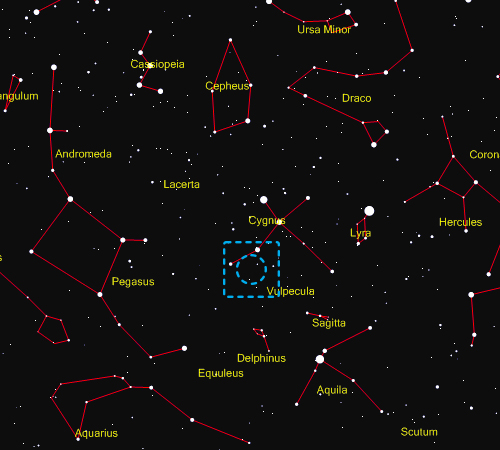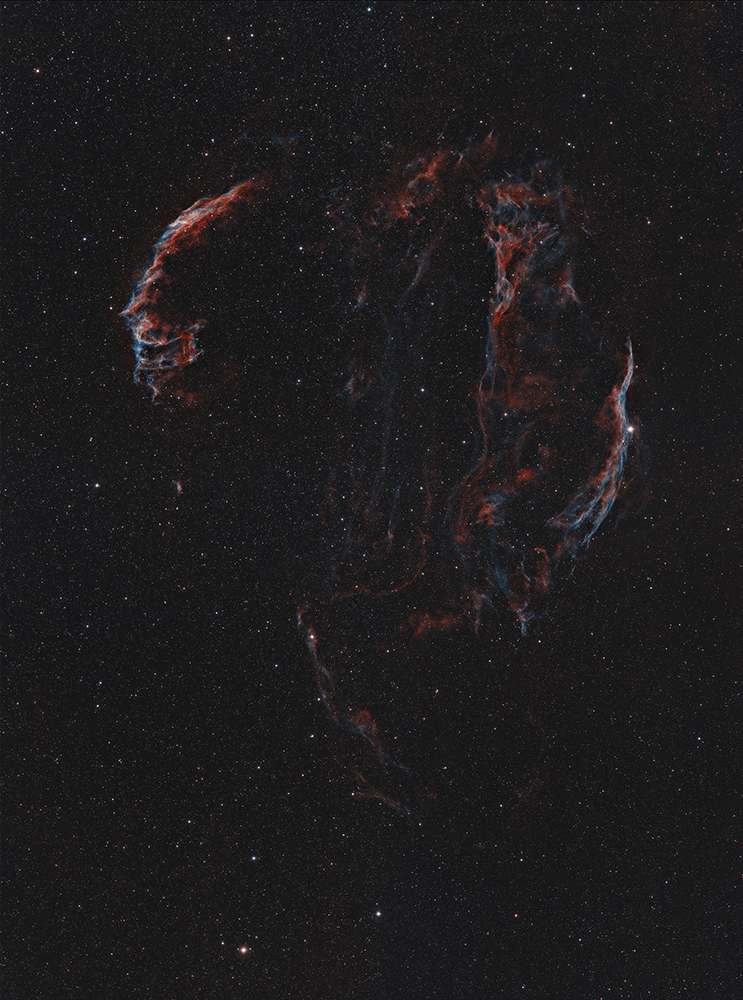The Veil Nebula is a vast supernova remnant in Cygnus formed by a star that exploded around 5000 to 8000 years ago. The shock waves have expanded through space and cover a huge area. This image contains an area of sky about 4 x 5 degrees and is a four pane mosaic to fit in the whole Veil Complex.
The name 'Veil Nebula' refers to all the visible structures inside the remnant and the entirety of the loop itself. Three main structures make up the primary components; The Western Veil, The Eastern Veil and Pickering's Triangle. The Western Veil, consisting of NGC 6960, can be found near the star, 52 Cygni, on the right of the image. The Eastern Veil, on the left of the image, has a bright area called NGC 6992 and fades off south into NGC 6995 and IC 1340. Pickering's Triangle, at the top right in this image, is brightest at the north-central edge of the loop. Luminous knots called NGC 6971 and NGC 6979 can also be found in a fainter patch of nebulosity on the northern rim between NGC 6992 and Pickering's Triangle.
William Herschel discovered the Veil Nebula on September 5, 1784. However, Pickering's Triangle was discovered by Williamina Fleming, but was accredited to Edward Charles Pickering, the director of the observatory, as was customary in 1904 when it was discovered.
The Veil Nebula consists of portions of the Cygnus Loop, SNR G074.0-08.6 and Sharpless 103, that can be seen using visible light. The other parts of the Cygnus Loop, which do not emit in visible light, can be seen in infrared, X-ray, and radio images.
The Cygnus Loop has a radio source designation W78 and is also known as Sharpless 103. However, the Veil Nebula is one of the brightest, largest X-ray sources in the sky. Analysis of its emissions indicates that it contains oxygen, hydrogen, and sulphur. Nevertheless, even though the nebula has a relatively bright integrated magnitude of 7.0, it is spread over so large an area that the surface brightness is quite low. |


